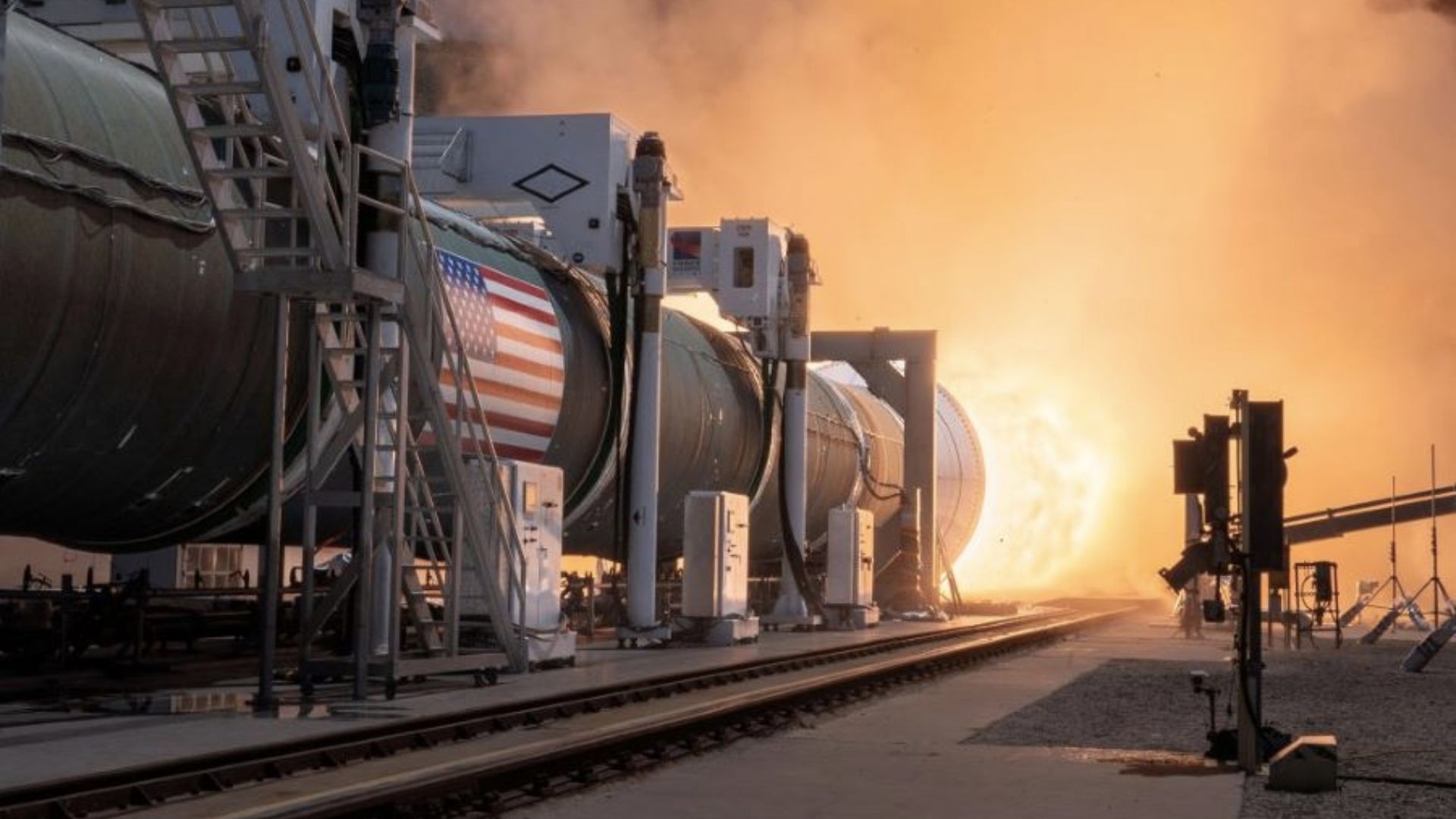A Virginia-based propulsion-focused company conducted a full-scale static fire of NASA’s Booster Obsolescence and Life Extension (BOLE) solid rocket booster.
The 156-foot-long five-segment solid rocket motor produced upwards of 4 million pounds of thrust during the test conducted by Northrop Grumman.
This was the first demonstration test of the world’s largest and most powerful segmented solid rocket motor built for human spaceflight.
Booster features updated propellant formulation
The company revealed that the booster features a composite case design, updated propellant formulation, and advanced components to increase booster performance by more than 10 percent compared with the current five-segment Space Launch System (SLS) booster design.
The booster, claimed to be more efficient than its predecessor, provides another five metric tons of payload to lunar orbit, a capability critical to supporting deep space missions.
Produces more than 4 million pounds of thrust from a single booster
More than 700 data channels assessed the motor as it fired for just over two minutes, producing more than 4 million pounds of thrust from a single booster.
Leveraging Northrop Grumman’s industry-leading experience in solid rocket motor manufacturing, BOLE improves on previous designs by replacing key components that are no longer in production.
“Today’s test pushed the boundaries of large solid rocket motor design to meet rigorous performance requirements,” said Jim Kalberer, vice president, propulsion systems, Northrop Grumman.
“While the motor appeared to perform well through the most harsh environments of the test, we observed an anomaly near the end of the two-plus minute burn. As a new design, and the largest segmented solid rocket booster ever built, this test provides us with valuable data to iterate our design for future developments.”
Carbon fiber composite case enables better booster performance
The company revealed that the carbon fiber composite case enables better booster performance, faster manufacturing, and aligns with commercial standards by providing commonality among our infrastructure, supply chain, and manufacturing operations. Other aspects of the BOLE design, including metallic components, allow the company to support a U.S.-based supply chain of American manufacturers.
The BOLE booster development, awarded in 2017, represents a significant step towards more sustainable commercial practices and incorporates commonality in design and construction standards from across all of Northrop Grumman’s production programs, according to a press release.
The company supplied rocket propulsion for NASA’s Apollo and Space Shuttle Programs and developed the five-segment SLS solid rocket booster based on the flight-proven design of the space shuttle boosters. The five-segment booster, BOLE’s predecessor, generates 25 percent more power than its space shuttle predecessor and provided over 75 percent of the SLS rocket’s initial thrust during the Artemis I mission on November 15, 2022.
The BOLE booster is designed to power the Space Launch System for Artemis missions returning to the moon, with capabilities that could eventually support Mars exploration. The Artemis program currently has shuttle era boosters that will last through Artemis 8 but after that, the SLS launch system carrying the Orion capsule will need a new, more advanced motor.
